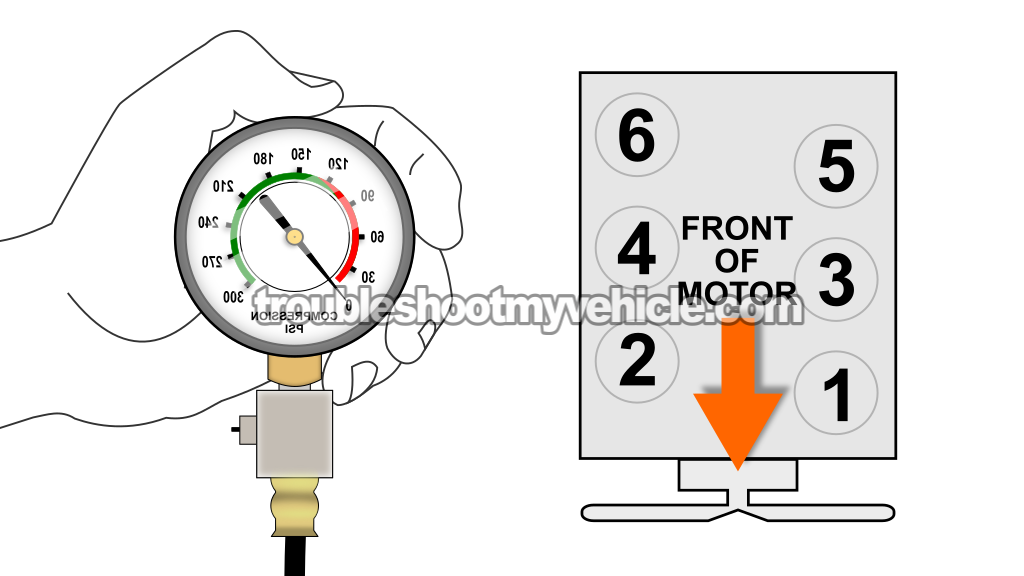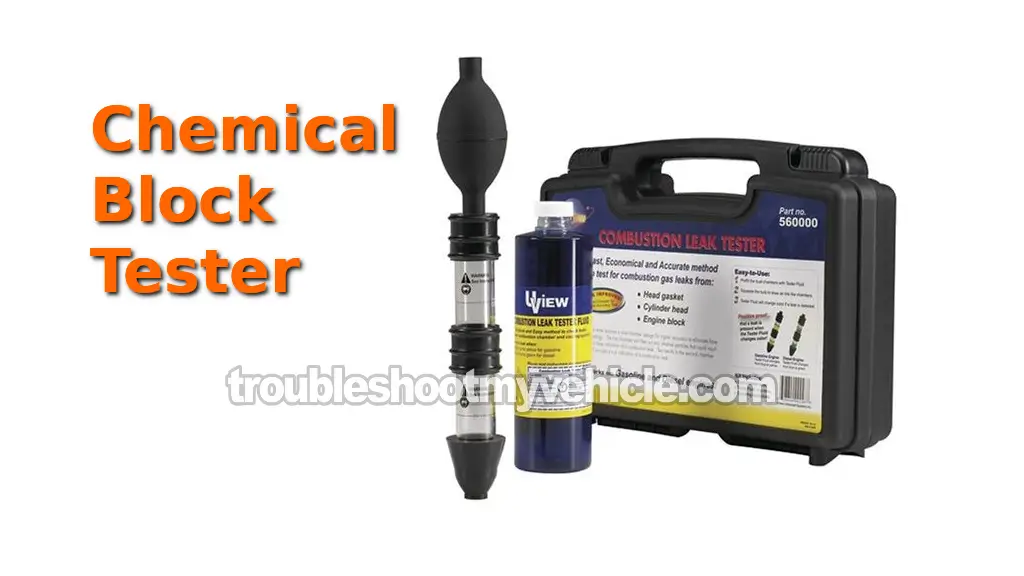TEST 3: Cylinder Compression Test

Sometimes, the head gasket burns out right between two cylinders that sit next to each other (you can see what that looks like in the image at the beginning of this tutorial).
When that happens, the engine usually starts up but runs rough or misfires badly.
The best way to pinpoint this kind of head gasket failure is by doing a compression test.
NOTE: The engine compression is explained in more detail (and how to interpret its results) in this tutorial: How To Test The Engine Compression (1989-2003 3.9L V6 Dodge Ram Van).
Here's how you do it:
- 1
Disable the ignition system.
Just unplug the ignition coil's 2-wire connector. - 2
Disconnect all the spark plug wires from their spark plugs.
- 3
Remove all the spark plugs.
- 4
Screw in the compression tester by hand into the first spark plug hole you wanna test.
NOTE: Don't use any tools to tighten it. Just hand-tighten it. - 5
Have your helper crank the engine while you watch the gauge.
- 6
Once the needle stops moving, tell your helper to stop cranking.
- 7
Write down the PSI reading and the cylinder number. Use the diagram above if you're not sure which cylinder is which.
- 8
Remove the tester and repeat the steps for the other cylinders.
Now let's break down what the results mean:
CASE 1: All cylinders showed normal compression. That's the result you want and it means the head gaskets are not burned between two neighboring cylinders.
If you still think there might be a blown gasket, go to: TEST 4: Using A Chemical Block Tester (Combustion Leak Tester).
CASE 2: Two side-by-side cylinders had 0 PSI. That tells you the head gasket's burned right between those two. It'll need to be replaced (along with the other one).
TEST 4: Using A Chemical Block Tester (Combustion Leak Tester)

A blown head gasket can make the engine overheat just minutes after starting, but you might not see any of the signs the first 3 tests look for.
The only real way to know if a blown head gasket's causing the problem in this case is by doing a block test.
A block test (also called a combustion leak test) checks if exhaust gases are leaking into the cooling system —and honestly, it's the most solid way to tell if the gasket's blown when the other tests don't give you a clear answer.
Here's how the test works:
- You fill the tester with a special blue liquid (see the photo above).
- Then you place the tester onto the radiator opening. You might need to drain some coolant first since the tool needs to pull in some of the air sitting inside the radiator.
- Start the engine and let it run.
- Squeeze the rubber bulb to pull air from the radiator through the tester's chambers. As the air bubbles up through the liquid, it reacts with the chemical.
- If the blue fluid turns yellow (on gasoline engines), that means combustion gases are leaking in —confirming a blown head gasket, a cracked block, or a cracked cylinder head.
- If the fluid stays blue, you're in the clear. No head gasket issues, no cracks in the cylinder head or engine block.
You can shop for a block tester here:
Disclosure: As an Amazon Associate, I earn from qualifying purchases. If my tutorials help you, using these links is an easy way to support the site at no extra cost to you. Thank you!
More 3.9L V6 Dodge Ram Van Tutorials
You can find a complete list of 'how to' tutorials and wiring diagrams for your 3.9L V6 Dodge Ram van in this index:
Here's a sample of the tutorials you'll find in the index:
- How To Test The Engine Compression (1989-2003 3.9L V6 Dodge Ram Van).
- How To Test The Fuel Pump (1992-2003 3.9L V6 Dodge Ram Van).
- How To Test The TPS (1997-2003 3.9L V6 Dodge Ram Van).
- Fuel Pump Circuit Wiring Diagram (2000-2003 3.9L V6 Dodge Ram Van).

If this info saved the day, buy me a beer!




